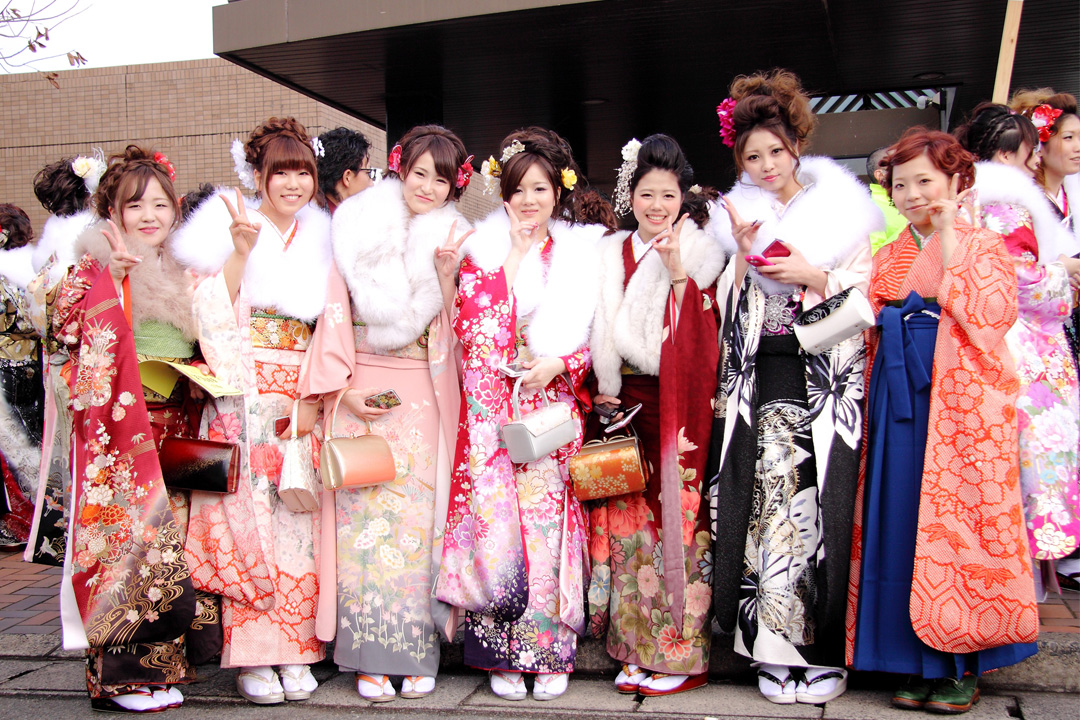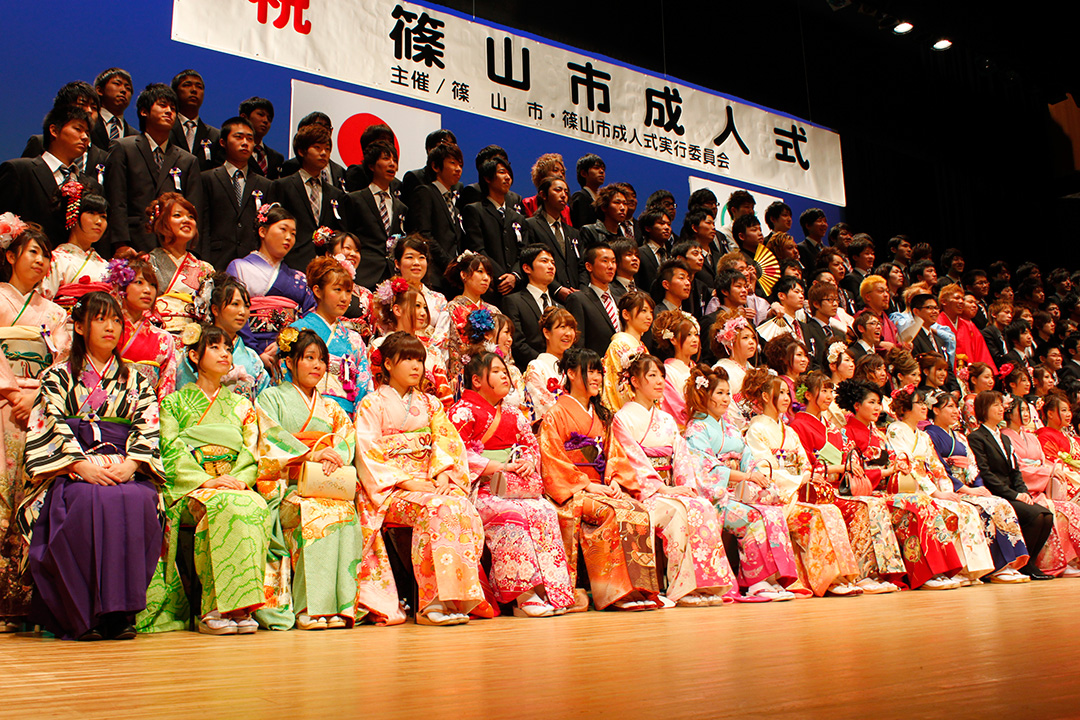Japan Tradition: Seijin Shiki
Seijin Shiki
Seijin Shiki anche conosciuta come Seijin no Hi (成人の日) è il giorno della Maggiore età. Questa è una festa giapponese che si tiene ogni anno il secondo lunedì di gennaio. Lo scopo di questo giorno è di congratulare ed incoraggiare tutti coloro che hanno compiuto il ventesimo anno di età, l’età della maturità (二十歳 hatachi), nell’anno passato.
In questo giorno, molto giovani giapponesi celebrano con una cerimonia per il Giorno della Maggiore età, il Seijin-Shiki (成人式). Le feste per questa giornata sono spesso tenute negli uffici della prefettura e in locali. Tuttavia, molte persone fanno delle feste con la famiglia e gli amici successivamente. E’ anche comune vedere questi giovani camminare per strada indossando i vestiti tradizionali.

Shinjin Shiki, la cerimonia per la Maggiore Età, data indietro al 714 in Giappone. In questo anno, un giovane principe ha acquisito nuovi vestiti e acconciatura per marcare il passaggio all’età adulta. Tuttavia, questa festa è stata stabilita per la prima volta nel 1948 e si celebrava ogni 15 gennaio. Più tardi nel 2000, la data per il Seijin Shiki è cambiata ed ora si celebra il secondo lunedì di gennaio.
Solo coloro che hanno compiuto il ventesimo compleanno prima dell’ultima Festa della maggiore età o prima di quella attuale può unirsi ai festeggiamenti.
Seijin Shiki celebrations

Sijin Shiki segna l’età della maturità, che include l’espansione dei diritti ma anche l’aumento delle responsabilità previste. Di solito, gli ufficiali governativi fanno dei discorso e la famiglia e gli amici fanno dei piccoli regali ai nuovi adulti.
Le donne solitamente celebrano indossando furisode e sandali zōri che possono comprare, prendere in prestito da un parente o affittare per l’occasione. Anche gli uomini indossano vestiti tradizionali, come kimono scuri con hakama, ma oggi è anche comune vedere uomini che indossano giacca e cravatta.
Dopo la cerimonia formale, spesso escono in gruppi per festeggiare e bere con gli amici.
Photo credit: Google images
Condividi:
- Fai clic per condividere su Facebook (Si apre in una nuova finestra)
- Fai clic qui per condividere su Twitter (Si apre in una nuova finestra)
- Fai clic qui per condividere su Tumblr (Si apre in una nuova finestra)
- Fai clic qui per condividere su Pinterest (Si apre in una nuova finestra)
- Fai clic per condividere su Telegram (Si apre in una nuova finestra)
- Fai clic per condividere su WhatsApp (Si apre in una nuova finestra)
- Fai clic qui per condividere su Reddit (Si apre in una nuova finestra)
- Fai clic qui per stampare (Si apre in una nuova finestra)






